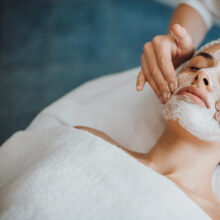Big News for Aesthetic Medical Spas
- Published: Saturday, May 2nd 2009
- in Living Well

How odd. On the front page of Thursday’s NY Times this week, I noticed this headline: “F.D.A. Orders Warning Label for Botox.” Yet when reading the article I found a far more interesting and important issue than what the headline touts. Let me know if you agree.
Here is how the article began: “Botox and other similar anti-wrinkle drugs must now carry the most stringent kind of warning label, the Food and Drug Administration said Thursday. The F.D.A. issued that order the day after the agency approved a new drug, Dysport, that is expected to be the first real challenger to Botox in the United States.”
Wow! Dysport has been approved? Botox finally has a challenger! That’s the real news which I think a lot of people (except those at Allergan who have had a monopoly on Botox for the past seven years) have been waiting for. Botox sales totaled $1.3 billion for Allergan in 2008 thanks in part to the fact that they have consistently raised prices every year. This latest development will certainly be good news for consumers and especially medical spa enthusiasts because prices will most likely come down.
Here is my theory on why many journalists (or those who write headlines) tend to pick up on “alarms” regarding Botox and fillers such as Juvederm, Restylane, and the like rather than recognizing what is really going to resonate with readers. It is because many of these writers are relatively young…in their 30’s, maybe 40’s. Translation – they don’t have wrinkles!
It reminds me of the time I saw a celebrity interviewed on television saying (with attitude I might add) that she would never do Botox. It’s poison…not safe…blah blah blah. Oh yes, she was in her 30’s. Well, all I can say is I would love to see what these people will say (and do) when they are in their 50’s or 60’s!
In the meantime, those of us in the spa industry might want to think about how this new development will affect our industry. I am not talking about the new warning label which I think will change almost nothing, but rather, that a competitor to Botox has entered the market.
If you trace the history of aesthetic med spas back to their beginning, you will see that they appeared on the scene in 2002 – the year Botox was approved. They have grown exponentially ever since. What’s going to be the result of Dysport and other anti-wrinkle substances that are now in the pipeline making their debut?


